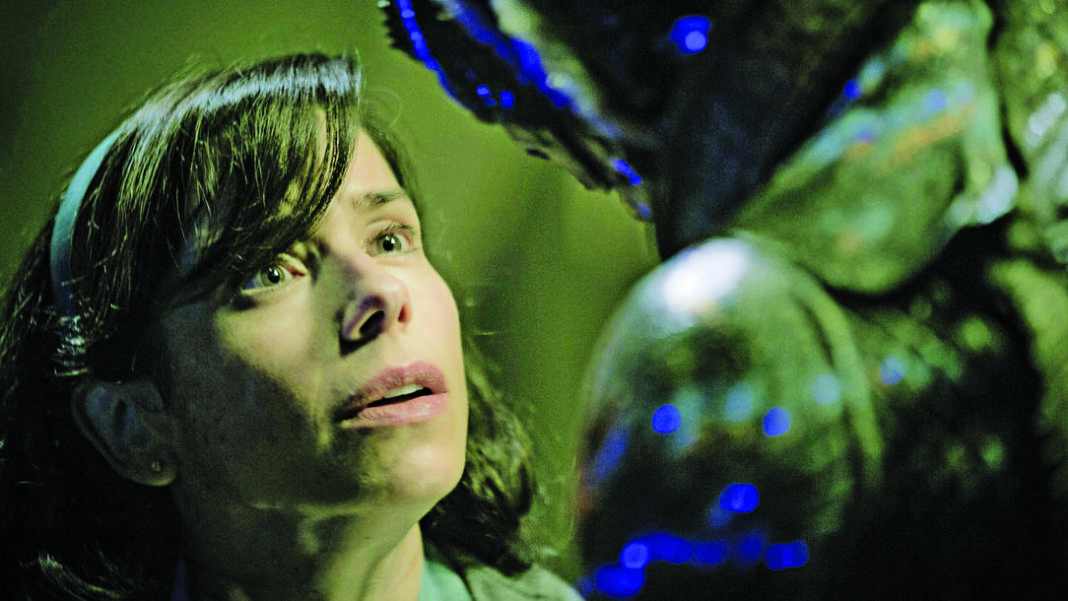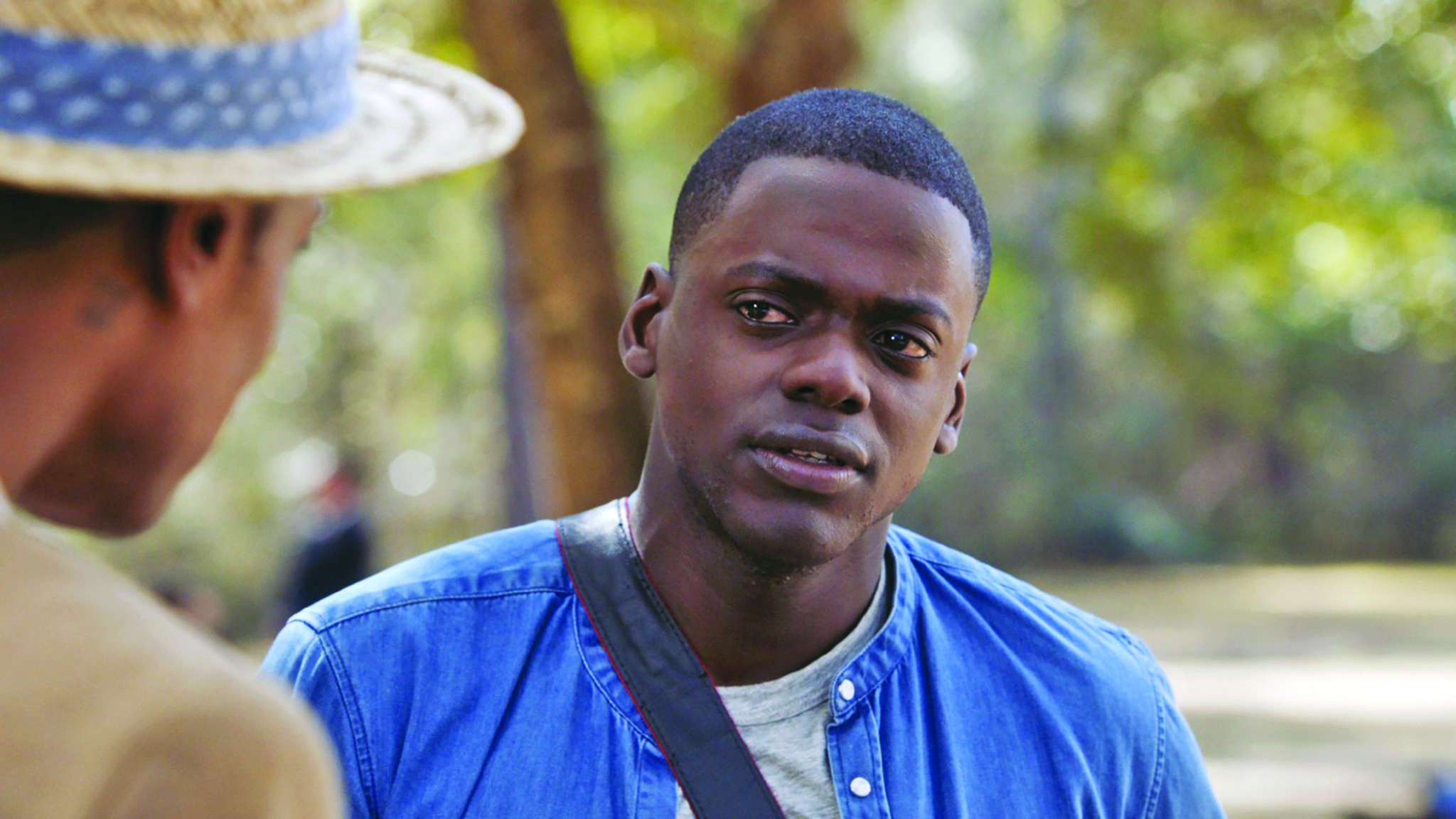Remember that folk belief that you could put a book under your pillow and the learning would percolate up into your brain? Imagine what dreams would come if your apartment were directly above one of the old movie palaces. In the splendid The Shape of Water, the mute heroine, Elisa (Sally Hawkins), a Baltimore scrubwoman of 1963—has lodgings above the auditorium of a red-velvet-lined theater.
The film is about the passion Elisa develops while working the midnight shift at a government lab. One steel-lined tank of water contains a prisoner (Doug Jones) hauled up from Amazonia; he has webbed hands, blue terrapin stripes on his head, transparent eyelids like a frog and a quite kissable mouth.
The military wants this amphibian humanoid vivisected pronto, while the scientist on watch, Dr. Hoffstetler (Michael Stuhlbarg) tries to stall them. Guillermo del Toro, of Pan’s Labyrinth, and co-writer Vanessa Taylor show the familiar conflict between the army and the scientists—between destroying the enemy or letting it live long enough to study it—that’s been seen in hundreds of 1950s monster movies.
On her late-night shifts, Elisa uses sign language to communicate with this creature, a being so “beautiful and intricate,” as Hoffstetler judges it. At last Elisa decides to free the frogman, with the help of her gay artist neighbor Giles (Richard Jenkins) and her friend and co-worker Zelda (Octavia Spencer).
The Shape of Water’s visual scheme is hypnotic. But to use the phrase from the Bible’s Book of Ruth, the movie approaches alien corn when the monster starts to show its magic powers as if he were E.T. And yet The Shape of Water has its own visual poetry in a story of love and violence. Hawkins, topping even her remarkable performance in Maudie, is captivating, sad and sensual.











